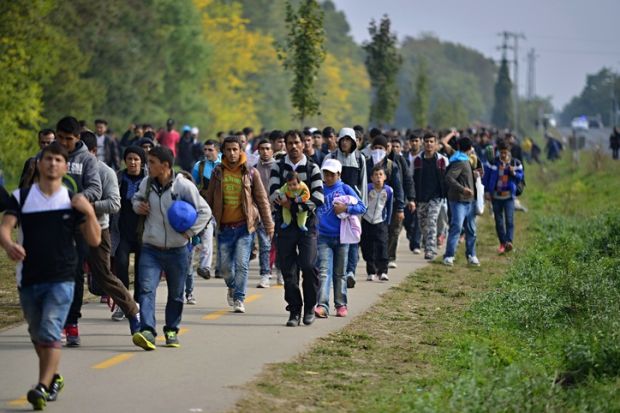Next month, we will be releasing the fourth edition of our Impact Rankings. Each year we work on making sure that the questions we ask universities are focused and relevant, but we try not to change things too much. This year, we have included small but important changes in the wording of the methodologies for SDG 10 (reduced inequalities), SDG 4 (quality education) and SDG 11 (sustainable cities and communities): we now explicitly reference support for refugees.
There are approximately 3 million refugees of university age around the world. Among them, only 5 per cent, or roughly 150,000, are enrolled in some form of higher education, according to the United Nations High Commissioner for Refugees (UNHCR), compared with a 39 per cent average enrolment rate among non-refugee youth (a figure that is far higher in many OECD countries).
I recently spoke to Manal Stulgaitis, UNHCR’s education officer, about the issue. She said that the low share of refugee university students represents “a decisive failure to deliver on these young people’s right to education”.
“This is a direct failure in terms of decent work and economic growth (SDG 8), reduced inequalities (SDG 10), and peace and justice (SDG 16). It is also a missed opportunity to capitalise on their skills and potential to contribute to the achievement of the wider Sustainable Development Goals,” she added.
In 2019, the UNHCR and partners committed to increase refugee participation in higher education to 15 per cent by 2030. Stulgaitis said achieving this goal would provide roughly half a million refugee youth with the opportunity to benefit from exposure to the new ideas one gains from higher education, to develop skills and earn a qualification that can lead to jobs and greater self-reliance, and to have the right to pursue their dreams equally alongside millions of their non-refugee peers.
Higher education institutions have a critical role to play in achieving the 15 per cent target. Universities already recognise the value of diverse student populations, teaching staff and academic content. Indeed, they know that is what their students expect and demand. Now, institutions must step up to the challenge of deliberately integrating students with forced displacement backgrounds by removing barriers to enrolment and proactively creating new ways for refugee students to enter higher education, according to Stulgaitis. This could mean recruiting in places where refugees live, creating scholarships for refugee candidates, providing welcoming and non-discriminatory environments, and making sure mechanisms for recognising foreign qualifications are efficient.
So what does all this mean for the Impact Rankings? In 2020, we created a working group with representatives from the University of Auckland’s Centre for Asia Pacific Refugee Studies and UNHCR to understand how we could support refugee higher education in the rankings. As an initial step, we have introduced the terms “forcibly displaced/refugee/asylum seeker/stateless” as part of the list of underserved student groups recognised within the SDG 10 methodology. Our methodology for SDG 4 also now explicitly references immigration status among other types of discrimination, while the SDG 11 indicator on preserving intangible cultural heritage includes “the heritage of displaced communities” as one example.
Will that make a big difference? UNHCR believes that such a change in language will have a significant impact on universities’ policies on inclusive and equal admission for displaced youth.
“The incentive offered by ranking agencies will stimulate discussion on problem-solving pathways and require pragmatic solutions for implementation. This small step has the potential to make a massive impact by opening more doors to talented refugee students and recognising the efforts universities are making to address the needs of those impacted by war, conflict, fragility and displacement,” said Stulgaitis.
We are pleased to be making these small but important steps to support increasing refugee participation in higher education, and we look forward to discussing what further changes we can make in future editions of the rankings.
Duncan Ross is chief data officer at Times Higher Education.
The Impact Rankings 2022 will be launched at the THE Innovation & Impact Summit in Sweden, taking place from 26 to 28 April. Register your interest.
We have compiled a list of frequently asked questions about our Impact Rankings, but if you have any other queries, email impact@timeshighereducation.com.







